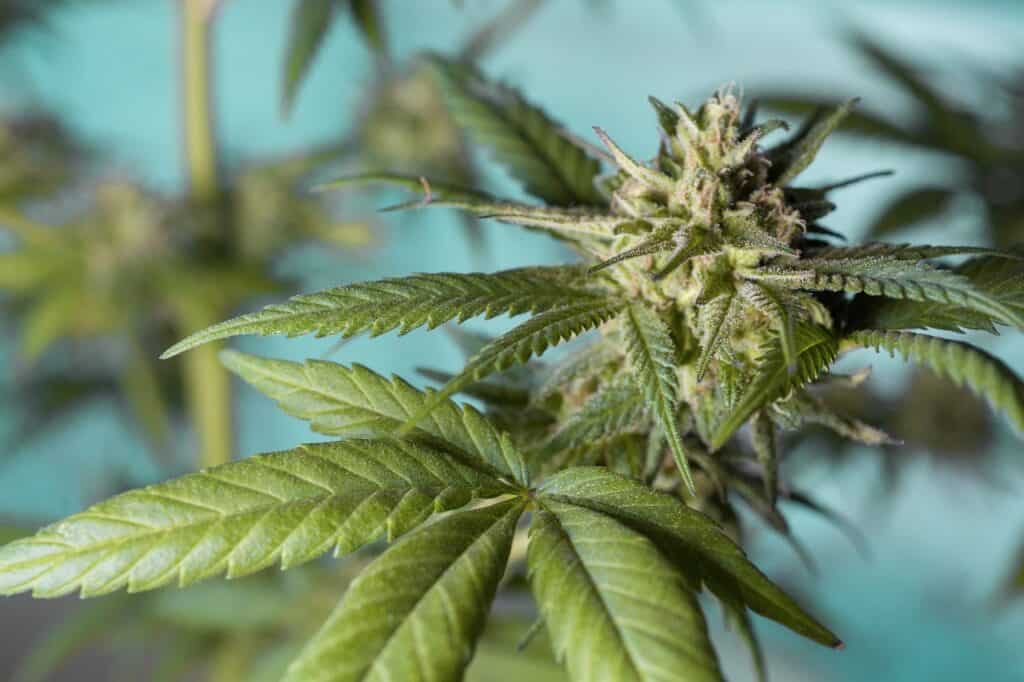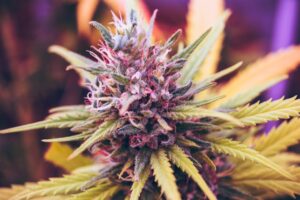Discover the ultimate guide to marijuana strains! Explore weed strain effects, flavors, and terpenes. Find the best strains of cannabis today!

Key Takeaways
- A cannabis strain is a type of marijuana plant cultivated for the specific combination of cannabinoids, including THC and CBD, terpenes, and the effects it can have.
- Cannabis strains can roughly be divided into three categories, namely sativa, indica, and hybrid.
- Strains differ based on their cannabinoid content, terpene profile, potency, and genetics.
- When considering which cannabis strain would be most suitable – consider the intention you wish to achieve with the strain, the THC/CBD ratio, your tolerance level, your preferred flavor, and the time you plan to use it.
- Certain cannabis strains have also been shown to be effective in treating certain medical ailments, which include persistent pain, anxiety, stress, and sleep disorders, as well as stimulating appetite.
Cannabis has, for thousands of years, been cherished and used by mankind, transforming itself from being a useful plant into a liberating, medical, and artistic plant. This evolution has cannabis strains at the center: different varieties that have been selectively bred to produce different combinations of effects, tastes, and medical benefits. In this article, the science, history, classification, and future will be emphasized and examined step by step.
What Are Cannabis Strains?
Different strains owe their genetic diversity to geography, history, and breeding techniques, and such uniqueness is tied to the makeup of cannabinoids, terpenes, and flavonoids found in the particular strain. Such factors are what determine the effects of the user’s psychoactive, taste, and medical expectations from the specific strain.
Two of the most well-known and studied cannabinoids in cannabis are THC and CBD. Irrational thoughts and feelings, also known as being ‘high,’ are caused by THC, while CBD, which is not intoxicating, has a number of medicinal benefits. A contribution to flavor and scent, as well as a change in effects, can be achieved through terpenes that are distributed in weed plants and have an association with cannabinoids; this is referred to as “the entourage effect”[1].
What is the Evolution of Cannabis Strains?
As we see today, strains of cannabis are a result of considerable practice ranging from breeding to cultivation over the years. In the past, cannabis was mostly grown domestically in its wild style, or rather, its landrace varieties that developed in specific structures around specific areas. These landrace strains are responsible for Afro Kush, Durban Poison, and a variety of other indigenous strains found naturally in their native areas.
The modern cannabis industry has taken these landrace strains, cross-breeding to yield a better-flavored, stronger, and more medicinal hybrid. Disparate breeders across the globe continue to hatch varying genetic mixtures, which, resultantly, has caused an explosion in the variety of cannabis.
What is the Classification of Cannabis Strains?

We can categorize weed strains into three specific categories – Sativa, Indica, and Hybrid. Of course, Sativa and Indica dominate the scene both in terms of demand and supply, but it is worth mentioning that there are sub-categories to these two.
- Sativa
Due to its tropical origins, Sativa has a quicker maturation time.
- Characteristics: Sativa plants are tall and slimmer with long, thin leaves making them easily distinguishable from Indica strains.
- Effects: Known for their pungent aromas, Sativa strains are uplifting and energizing and have a positive effect on the user’s mood.
- Best For: Creatively charged or euphorically focused tasks making Sativa strains most suitable for use in the mornings and afternoons. Regular users have often stated less fatigue throughout the day.
- Examples: Sour Diesel, Green Crack, and Jack Herer.
- Indica
Growing in cooler climates allows Indica strains to be more physically dense both in structure and in leaf base.
- Characteristics: These plants have a sturdy base with broad leaves to maintain their broad stature and are, therefore, quite bushy.
- Effects: Indica strains are known for their sedating properties and have been found effective for pain relief, making them an ideal night-time strain. Common use includes to aid stress and insomnia.
- Best For Late-night use and ease any chronic pain in the body. The plant induces calmness in the body, allowing easy sleep.
- Examples: Northern Lights, Hindu Kush, and Granddaddy Purple.
- Hybrid
As the name suggests, Hybrid cannabis strains are a result of interbreeding Sativa and Indica, which are the two most famous subcategories.
- Characteristics: Relatively new, hybrid strains possess more characteristics than those possessed by their parent counterparts, making them hybrid in appearance as well.
- Effects: Since hybrids are a cross between the two parent strains, a combination of all effects can be assumed, making them usable at different times for different users.
- Best For: Offering deep personalization based on various factors.
- Examples: Blue Dream, Gelato, Wedding Cake.
What Are the Best Cannabis Strains?
There is a wide variety of marijuana strains available in the markets, but owing to their strength, distinct taste, or medical qualities, only a few strain names have made a mark. A few examples of this are:
- Type: Hybrid (more Sativa).
- Effects: This strain gives a balanced high, where the most notable is cerebral while the body feels relaxed.
- Flavor: It has a pleasant sweet berry-like scent.
- Uses: It can be utilized in dealing with mental health issues, including stress, depression, and chronic pain.
- OG Kush
- Type: Hybrid.
- Effects: Euphoria and relaxation tend to be present, sometimes described as a high all over the body.
- Flavor: More of a woody earthy taste with hints of citrus.
- Uses: Stress, anxiety, and insomnia.
- Durban Poison
- Type: Sativa only.
- Effects: Energizing. However, it’s best for creative output as it gets your juices flowing during the initial stages.
- Flavor: Sweet but has a touch of spice.
- Uses: Fatigue, ADHD, and even to aid in creative projects.
- Granddaddy Purple (GDP)
- Type: Indica.
- Effects: Physically, this strain packs a punch and can make you lazy and addicted (with very strong body effects).
- Flavor: Grapefruit with hints of berries.
- Uses: Used for stimulating appetite, pain, and insomnia.

What Are the Best Cannabis Strains for Medical Use?
The success of medical marijuana treatment modality often depends on the type of cannabis strain utilized. Such attention to cannabis use when practicing medical cannabis is warranted given its addressing issues that are many such as the following :
- Pain
OG Kush or Northern Lights are examples of strains associated with alleviating patients suffering from chronic pain or migraines[3].
- Anxiety and Depression
You will definitely want to try out the Harlequin strain. This strain may reduce anxiety and mood disorders without causing a psychoactive high such as those imparted by high THC content strains.
- Insomnia
Indica varieties such as Granddaddy Purple and Bubba Kush are known for their sedating effects, which help users fall asleep.
- Appetite Stimulation
Strains such as Girl Scout Cookies and Pineapple Express may help enhance hunger, especially for patients who are undergoing chemotherapy or are affected by anorexia.
What Factors Make Up a Strain?
Here are some of the factors that determine the type of strains.
- Cannabinoid Profile
Therapeutic and psychoactive properties are determined by various cannabinoids such as THC and CBD, as well as some minor compounds such as CBG and CBN. THC-rich strains are ideal for recreational purposes, and CBD-rich strains are good for medical purposes[2].
- Terpene Profile
Terpenes provide cannabis with a captivating sensory experience. For instance:
- Limonene: Citrus smell, associated with uplifting effects.
- Myrcene: Earthy smell but induces relaxing effects.
- Pinene: Pine Smell, energizing effect.
- Potency
THC and other cannabinoid concentrations determine the potent effects of the strain. Novice users may want to steer towards those with little THC, but instances of experienced users are often conversant with high potency.
- Growing Conditions
Cannabis sativa plants may be grown indoors, outdoors, or in a greenhouse. It is often the case, however, that the most effective strains are capable of producing the best flavors and potency when undertaken in optimal conditions.
Are There Any Challenges in the Cannabis Strain Market?
Now, let’s take a look at the difficulties in the cannabis strain market.
- Apparent Nomenclature Variations
There is a variability in the naming of cannabis strains which serves to confuse consumers. Strains with identical names may differ in cannabinoid and terpene content depending on their grower.
- Geographical Restrictions
Differing cannabis laws in different regions discourage the research and development of new strains. With legalization increasing, the scope for innovation could be much higher.
- Inaccurate Classification/Labeling
This is a common problem within unregulated dispensaries where the labels on cannabis strains do not match the actual strain or product that is being sold to consumers.
What is the Future of Cannabis Strains?
Developments in gene science and cultivation appear to rapidly propel the industry forward. Some trends that are coming to define the future of cannabis are as follows:
- Custom Pharmaceutically Active Cannabinoid Strains
With progressive genetic testing and data-centric research, companies are developing cannabis ”targeted” on the person’s health and genetic features.
- Strains With High CBD Profiles
Due to the increasing demand for therapeutic cannabis products, geneticists are actively looking for high CBD strains that have a low THC level.
- More Advanced Terpene Expression
Future generations might incorporate advanced genetics into the available cannabis options that may enhance the traits that are most desired in users.
- Climate-Resistant Strains
Globalization has allowed cannabis to spread to various regions, and as such, cannabis genes are being engineered to suit a wide range of climates.
Conclusion
The cannabis strains are a clear reflection of the diversity and the complexities that define the cannabis plant. Educating yourself—whether you’re a recreational user looking for a specific high or a medical patient looking for a remedy, the peculiarities of the strains will go a long way in helping you select the right product. As the industry progresses and knowledge increases, the appeal of cannabis strains to enhance human life for health, creativity, and entertainment is ever-widening.
FAQs
- What is a cannabis strain?
A cannabis strain can be defined as a subcategory of the cannabis plant species that possesses its own unique structure, chemical profile, characteristics, and effects. Strains are bred for specific traits such as high flavor or high potency or for medical purposes.
- How many cannabis strains do we have?
Traditionally, it is appropriate to distinguish the following cannabis strains:
- Sativa: Uplifting and energizing, best for daytime use.
- Indica: Relaxing and sedative, often used for pain relief and sleep.
- Hybrid: A mix of Sativa and Indica traits, offering balanced or tailored effects.
- How many cannabis strains do we have?
Strains differ based on their:
- Cannabinoid content (e.g., THC, CBD).
- Terpene profile, which affects aroma, flavour, and effects.
- Potency – the ratio of cannabinoids to the weight of the cannabis flower.
- Genetics, determining whether the strain is Sativa, Indica, or Hybrid.
- What are terpenes, and what do they do?
Most effects of cannabinoids can be reversed to some extent by terpenes that act in synergy with cannabinoids and have the potential to enhance tissue penetration, bioavailability, and anti-inflammatory activity in plant compounds. When combined, they can enhance potency allowing for minor dosage with terpenes such as:
- Limonene – Treats depression and anxiety and has a great citrus aroma with uplifting effects.
- Myrcene – Earthy Scent with relaxing sleep effects – great for sleep disease patients.
- Pinene – Terrific pine accents with energizing effects.
- Do you have personal recommendations for the selection of cannabis strains?
Here are a few factors to think about:
- Your intention: Are you looking to unwind and boost energy, or do you intend to relieve pain?
- THC/CBD ratios: There’s THC for getting high, and there’s CBD for its health benefits.
- Tolerance level: If you have never used cannabis before, consider taking a strain that has a lower percentage of THC.
- Taste: Preferences to taste; choose the strain whose terpenes are appealing to you.
- Timing: Sativas for the daytime, Indicas for the evening time.
References
- Ferber SG, Namdar D, Hen-Shoval D, Eger G, Koltai H, Shoval G, Shbiro L, Weller A. The “Entourage Effect”: Terpenes Coupled with Cannabinoids for the Treatment of Mood Disorders and Anxiety Disorders. Curr Neuropharmacol. 2020;18(2):87-96. doi: 10.2174/1570159X17666190903103923. PMID: 31481004; PMCID: PMC7324885.
- Szejko N, Becher E, Heimann F, Grotenhermen F, Müller-Vahl KR. Medicinal Use of Different Cannabis Strains: Results from a Large Prospective Survey in Germany. Pharmacopsychiatry. 2024 May;57(3):133-140. doi: 10.1055/a-2261-2269. Epub 2024 Mar 12. PMID: 38471525; PMCID: PMC11076101.
- Piper BJ. Mother of Berries, ACDC, or Chocolope: Examination of the Strains Used by Medical Cannabis Patients in New England. J Psychoactive Drugs. 2018 Apr-Jun;50(2):95-104. doi: 10.1080/02791072.2017.1390179. Epub 2017 Oct 24. PMID: 29064777; PMCID: PMC6275121.








